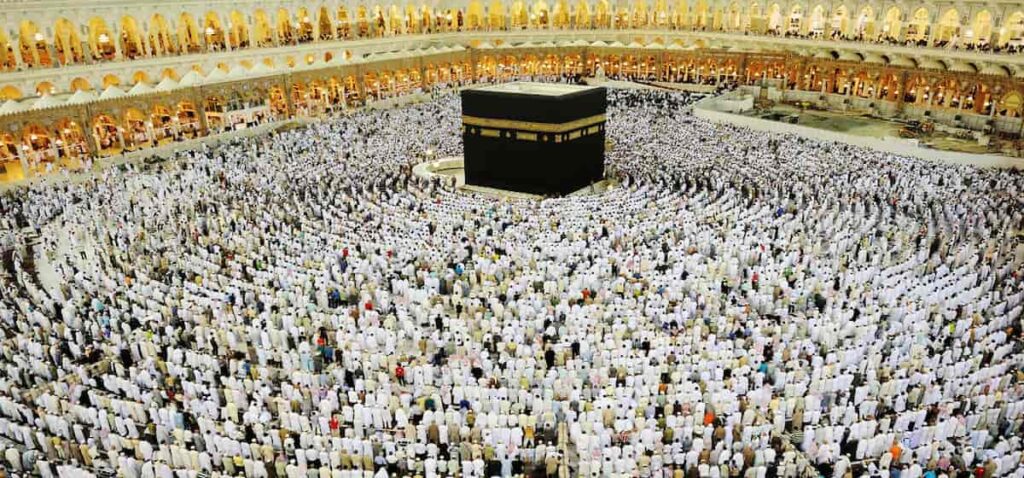Hajj: The Pilgrimage to Mecca
Hajj is the annual Islamic pilgrimage to Mecca, the holiest city in Islam. It is a sacred journey that Muslims undertake to fulfill one of the five pillars of their faith.
History of Hajj:
Hajj dates back to the time of Prophet Ibrahim (Peace be upon him), who built the Kaaba with his son Ismael (Peace be upon him). Prophet Muhammad reestablished the Hajj rituals in the 7th century CE. It has been performed by millions of Muslims throughout history, becoming a central part of Islamic faith.

Importance of Hajj in Islam:
- It provides a chance for Muslims to cleanse their souls, seek forgiveness, and renew their commitment to their faith.
- The pilgrimage brings together Muslims from all over the world, fostering a sense of global unity and brotherhood.
- Completing the Hajj is one of the five pillars of Islam, making it a fundamental obligation for all able-bodied Muslims.
Preparation for Hajj:
- Ensuring one has the financial means to cover the costs of the pilgrimage.
- Maintaining good health and physical stamina to undertake the various Hajj rituals.
- Engaging in prayers, fasting, and other devotional activities to prepare the soul.
- Obtaining the necessary travel documents and visas for the journey.
Hajj Procedures:
- Ihram: Wearing the special white garments and entering a state of ritual purity.
- Tawaf: Circling the Kaaba seven times, the most sacred site in Islam.
- Sa’i: Reenacting the search for water by Hajra (alaihis-salaam), running between the hills of Safa and Marwah.
- Wuquf-e-Arafaat: Standing on the plains of Arafat, engaging in prayers and reflection.
- Travel to Muzdalifah and spend a night there.
- Collection of stones for the next arkan.
- Travel to Mina: Mina is the city of tents. Jamraat is in Mina.
- Throwing stones on pillars of Shaitan in Jamraat.
- Sacrficing Animal.
- Hair cut: Haircut symbolizes new, pure start.
- Tawaf al-Ziyarah
- Travel to Madinah to visit Prophet Muhammad ((Peace be upon him’s) mosque i.e., Masjid-e-Nabwi (Peace be upon him).
Significance of Locations:
- Kaaba: The cubic structure at the center of the Masjid al-Haram, the direction of prayer for Muslims worldwide.
- Masjid al-Haram: The largest and holiest mosque in the world, surrounding the Kaaba.
- Mount Arafat: The site where the Prophet Muhammad delivered his final sermon, a crucial part of the Hajj rituals.
- Mina and Muzdalifah: The locations where pilgrims perform additional rites and rituals during Hajj.
Lessons and Values Learned:
- Equality
- Unity
- Humility
- Compassion
Conclusion:
Hajj is one of the pillars of Islam. It dates back to the time of Prophet Ibrahim (peace be upon him). Every year, millions of Muslims perform Hajj in the last month of the Islamic calendar. It teaches us unity, brotherhood, equality, and humility. It gives Muslims a chance to cleanse their souls and seek forgiveness.
FAQs
Hajj is an annual Islamic pilgrimage to Mecca, the holiest city for Muslims. It is mandatory for Muslims who are physically and financially capable of undertaking the journey.
Hajj takes place during the last Islamic month that is Dhu al-Hijjah.
- Ihram: Wearing the special white garments and entering a state of ritual purity.
- Tawaf: Circling the Kaaba seven times, the most sacred site in Islam.
- Sa’i: Reenacting the search for water by Hajra (alaihis-salaam), running between the hills of Safa and Marwah.
- Wuquf-e-Arafaat: Standing on the plains of Arafat, engaging in prayers and reflection.
- Travel to Muzdalifah and spend a night there.
- Collection of stones for the next arkan.
- Travel to Mina: Mina is the city of tents. Jamraat is in Mina.
- Throwing stones on pillars of Shaitan in Jamraat.
- Sacrficing Animal.
- Hair cut: Haircut symbolizes new, pure start.
- Tawaf al-Ziyarah
- Travel to Madinah to visit Prophet Muhammad ((Peace be upon him’s) mosque i.e., Masjid-e-Nabwi (Peace be upon him).
Download Pdf of this lecture through link below:
To learn more about other islamic and Quranic studies you can book online session with us through link below:


1 thought on “Hajj: The Pilgrimage to Mecca”